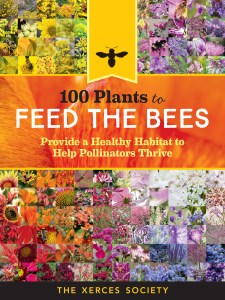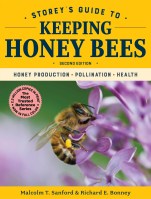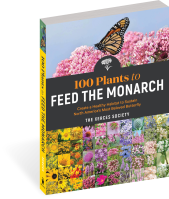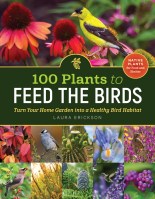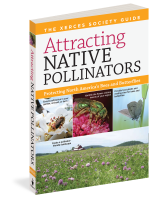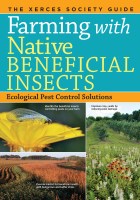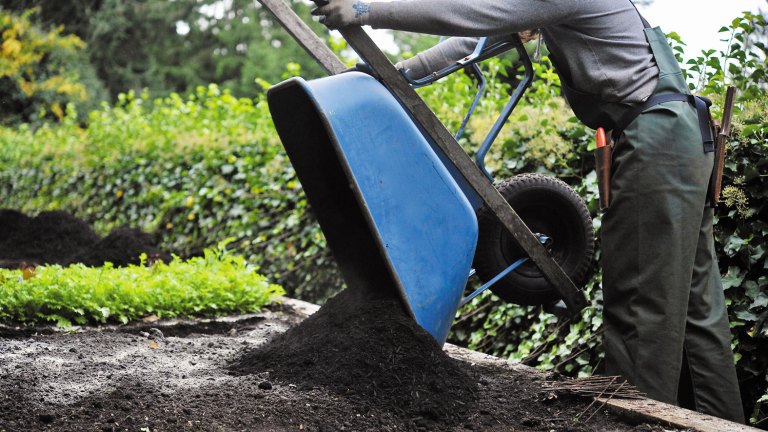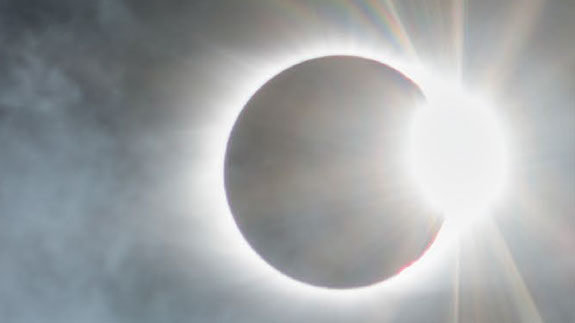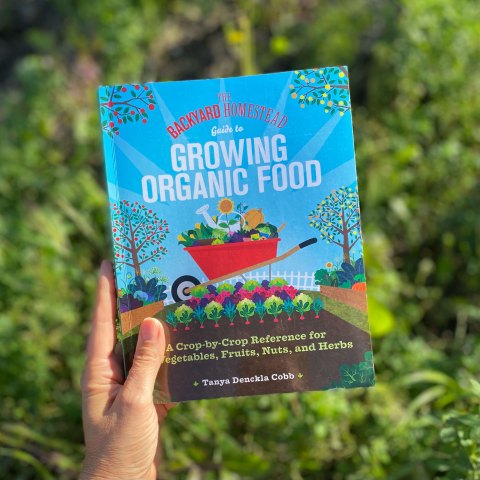How Flowers and Bees Evolved to Meet Each Other’s Needs
The first pollinators accidentally spread pollen while feeding on flowers. In the millions of years since, bees and flowers have coevolved for mutual success.
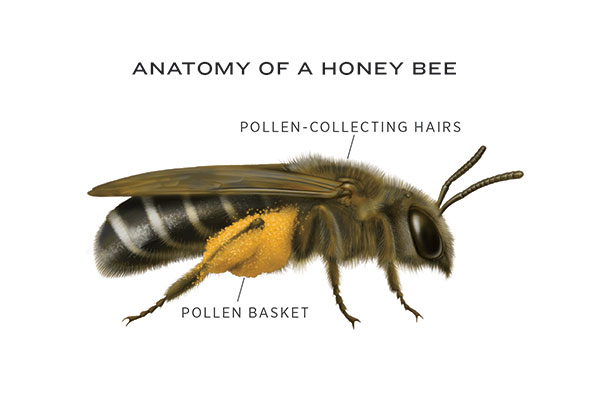
BEETLES, FLIES, AND WASPS are thought to be the first pollinators, accidentally spreading pollen while feeding on flowers. This set the stage for more complex plant-pollinator relationships to evolve.
Enter the Bees
The widespread distribution of diverse flowering plants 100 million years ago coincided with the appearance of intentional pollinators: bees.
Pollen is essential for the reproduction of both bees and flowers, so the two groups have coevolved for mutual success. Adult bees evolved behavioral and physiological adaptations to gather and transport pollen more efficiently, such as:
BUZZ-POLLINATION. Flight muscles can create sound vibrations that dislodge pollen from flowers.
FLORAL CONSTANCY. An individual pollinator may specialize in foraging one flower type.
POLLEN-COLLECTING HAIRS. The “pollen basket” and other specialized hairs on a bee’s body carry pollen back to the colony.
Although most bees are pollen generalists, capable of foraging on many plant species, many are specialists that forage on only a small group of specific flowers.
What Makes a Good Pollinator Plant?
A flower’s color, odor, shape, size, timing, and reward (nectar or pollen) can increase or decrease the number of visits by specific pollinators. Some examples of how plants “reach out” to bees and others:
ULTRAVIOLET INVITATIONS. Bees can see ultraviolet light but not red light; thus, flowers in the ultraviolet range attract more bee visits, while red-hued flowers reduce them.
COLOR PHASES. Many flowers signal pollinators by changing color at different stages of development, attracting pollinators when they need them most, thus increasing the efficiency of the pollinators they depend upon.
NECTAR GUIDES. Contrasting patterns of flower shades, tints, and tones further direct pollinators toward floral rewards such as nectar or pollen, much like the nighttime runway lights of an airport.
FRAGRANCE. Minty or sweet, musky or ethereal, pungent or putrid, floral odors result from variations in chemical compounds. Fragrance can attract particular pollinators over long distances.

Risks and Rewards of Flower Foraging
OF COURSE, POLLINATORS MOST OFTEN visit flowers for nutrient-rich food rewards: pollen and nectar. The availability and quality of these rewards vary depending on time of day, environmental factors, and an individual plant’s life cycle. And from the perspective of a bee, butterfly, or other pollinator, several factors can make a particular flower useful, or not.
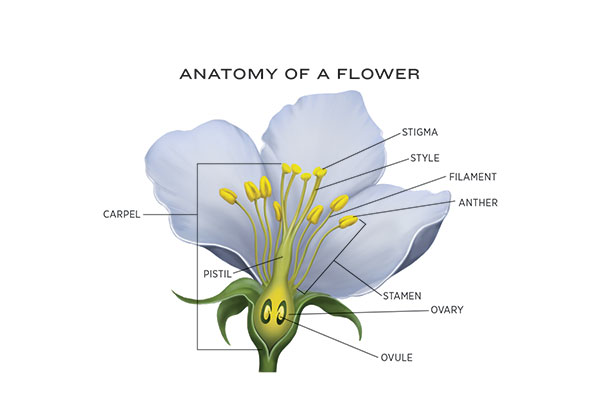
Nutrition
Floral rewards include pollen, nectar, oils, and/or resins, depending on the plant species.
POLLEN, the most protein-rich of these rewards, is essential to bee reproduction. Once gathered, adult bees typically mix pollen with nectar and glandular secretions to form a nutritious “bee bread,” which forms the diet of larval bees.
NECTAR is composed chiefly of carbohydrates and water, with low levels of amino acids, lipids, proteins, and various vitamins and minerals. It is this sugar-rich food source that fuels adult bees, butterflies, and a myriad of other flower visitors, such as bats and hummingbirds.
OILS AND RESINS are secreted by some flowers to attract bees. Specialized floral glands produce calorie-rich, medicinal oils that are regularly collected by a few bees and mixed with pollen and nectar for feeding and medicating larvae. Most likely, such flower resins first evolved to protect the plants from herbivores or disease. Eventually bees came to use them as a food source, and as a resin for constructing antimicrobial and waterproof nests.
Nonfloral Rewards
Nonfloral (or “extrafloral”) rewards include nectar, honeydew, fruits, and saps.
EXTRAFLORAL NECTAR is produced by many plants as sugary droplets from glands on leaves, stems, and other nonflowering plant parts. These nectar droplets attract beneficial predatory insects, such as ants, beetles, flies, mites, spiders, and wasps — all of which may attack plant pests. Among some plants, these extrafloral nectaries may supply even more nectar than the flowers do themselves.
HONEYDEW is the sugary excrement of sap-feeding aphids, scale insects, whiteflies, and some butterfly caterpillars (mostly the blues, in the family Lycaenidae). Like extrafloral nectar, it is eagerly collected by many beneficial insects, including ants, bees, and wasps.
PROPOLIS, also known as bee glue, is a resinous sap mixture collected from plants by bees and harvested by humans. Honey bees collect propolis to construct and defend hives, weatherproof small cracks and holes, smooth surfaces, dampen vibrations, and protect themselves from bacteria, fungi, mites, and other intruders. Humans harvest and use honey bee propolis in cosmetics, soaps, medicines, and wood polishes or varnishes.
Species of solitary mason bees also collect propolis to construct, partition, and seal nests.
Other Rewards
Beyond pollen and nectar, plants sustain pollinators in several other ways, and the most familiar of these is as caterpillar food for butterflies. With only a few exceptions, the vast majority of butterfly and moth caterpillars are herbivores that feed exclusively on plant foliage. Depending on the species, those caterpillars may be generalists, which can feed on many types of plants, or specialists with a very narrow range of plants on which they can successfully feed.
Plants also offer nesting, egg-laying, and overwintering resources for pollinators, such as hollow or pithy canes; stalks, stems, or twigs; leaves, petals, or plant fibers; and exfoliating or peeling bark.
Risk Management
Foraging for food can be risky for pollinators. In the process of visiting flowers, an individual insect may encounter predators, disease vectors, or bad weather. The farther an insect has to travel, and the more energy it has to exert in collecting food, the more risk it is exposed to. Plants that provide an abundance of quickly accessible, nutrient-packed pollen and nectar obviously provide the greatest reward, and allow insect visitors to get on with the business of mating and reproduction.
